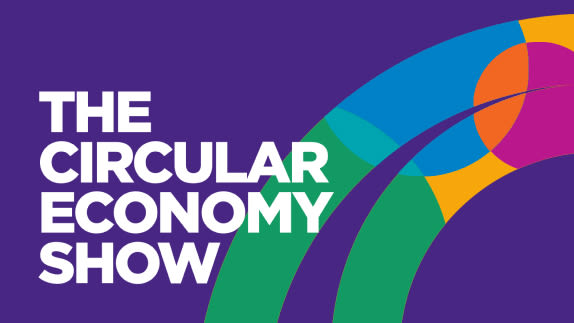Climate change and other societal challenges pose significant investment risks that are increasingly recognised by the financial sector. In the wake of businesses and governments, a growing number of financial institutions and investors have started to identify the circular economy as a positive framework to address these global issues. In turn, finance can play a decisive role in helping to catalyse and support this shift.
The stakes are undoubtedly high, but the commitment of all actors in the financial system to act will help avoid a climate-driven ‘Minsky moment’ — the term we use to refer to a sudden collapse in asset prices.
Mark Carney, Former Governor, Bank of England
15 June 2021 | For several years, finance has been striving to give environmental, social and governance (ESG) issues, such as climate change, pollution, and human resources management, a place in company decisions and investment strategies. Following a gradual transition, the past 18–24 months have seen ESG topics becoming a pressing priority for mainstream finance. Now, more than ever, investors understand the value of integrating these factors into their investment decisions. Several factors explain this shift.
Increasingly, financial decision-makers aiming for more than just financial returns ask for concrete actions from companies. There is a growing recognition that ESG can not only identify risks, but also deliver long-term growth and generate new sources of value by investing in players who are providing solutions and responses to the major challenges facing society. According to research from Opimas and the Global Sustainable Investment Alliance, ESG investment skyrocketed to over USD 40 trillion in 2020, up from USD 23 trillion in 2016. Deutsche Bank estimates that 95% of assets under management, or USD 130 trillion, will be governed by ESG mandate by 2030.
At the same time, governments, regulators, and central banks are reorienting public spending and policies towards the transition to an inclusive, low-carbon circular economycircular economyA systems solution framework that tackles global challenges like climate change, biodiversity loss, waste, and pollution. It is based on three principles, driven by design: eliminate waste and pollution, circulate products and materials (at their highest value), and regenerate nature.. The investment landscape is changing, it is no longer a trend but a groundswell:
Over the last 18 months, funds that focus on environmental focused investments have outperformed almost all other forms of index, some people will call that a momentum investment I would call that a sea change, I would call that a recognition that we have to move forward fast. Larry Fink, CEO, BlackRock
Thus, the question is no longer whether ESG issues matter to financial services but how to address them.
The circular economy: unlocking ESG goals and capturing new growth opportunities
By laying the foundation of a new and better growth, the circular economy is an essential part of the solution in delivering on climate change and ESG issues. Energy efficiency and moving to renewable energyrenewable energyEnergy derived from resources that are not depleted on timescales relevant to the economy, i.e. not geological timescales. can address 55% of global greenhouse gas (GHG) emissions. The circular economy, in addressing our material use by shifting the focus to retaining value and reusing the resources we already have, and transforming our food system can help tackle the remaining 45% of emissions (22.1 billion tonnes of CO2e per year). Recent research by the Ellen MacArthur Foundation and Material Economics shows how designing out waste, keeping materials in use, and regenerating farmland can significantly reduce GHG emissions. In applying these principles in just five key sectors (steel, aluminium, cement, plastic, and food), annual GHG emissions could fall by 9.3 billion tonnes of CO2e in 2050, equivalent to eliminating all transport emissions globally.
Beyond the climate emergency, it has also been shown that applying circular economy principles can improve air quality, reduce water contamination, and enhance biodiversity. As an example, a comprehensive circular economy approach for the plastic sector has the potential to reduce the annual global volume of plastics entering our oceans by over 80%, generate savings of USD 200 billion per year, reduce greenhouse gas emissions by 25%, and create 700,000 net additional jobs by 2040. In the fashion sector, circular business approaches that increase clothing utilisation rates, such as resale and subscription models, help reduce the amount of water needed for production and decrease water pollution from the dyeing and treatment of new textiles. In agriculture, the profitability of regenerative practices has in some cases been found to be higher than that of conventional food production systems. A 2018 study on corn fields found that those managed regeneratively saw a 78% increase in profits compared with conventionally farmed fields. A regenerative food production system can also create significant environmental benefits by improving the ecosystems in which they are embedded.
The need for a new economic model in which resources never become waste and one that is less critically dependent on extraction of virgin raw materials globally has become apparent.
The shift is happening and finance has started to seize the benefits of accelerating it
More and more companies across industries are adopting circular principles to reduce costs, increase revenues, and manage risks. Circular solutions accounted for 13% of Philips’ revenues in 2019, while Caterpillar offers more than 7,600 remanufactured products. Unilever has pledged to halve its virgin plastics use by 2025 and Solvay has set a goal to more than double the sales of products based on renewable or recycled resources to 15% of turnover. The circular economy has started transforming entire industries. In fashion for example, clothing resale is expected to be bigger than fast fashion by 2029.
Governments are accelerating this shift with the number of regulations and policy initiatives geared towards the circular economy rising quickly. The Circular Economy Action Plan is a key pillar of the European Green Deal and circular economy roadmaps and legislation are now in place in countries including China, Chile, and France.
Several mega-trends, such as urbanisation, digitisation and changing customer’s demands linked to a growing awareness of environmental and social issues, are accelerating the shift. The sharingsharingThe use of a product by multiple users. It is a practice that retains the highest value of a product by extending its use period. economy for example is expected to grow twentyfold by 2025, and refurbished medical equipment is expected to nearly double over the same period. Beside this long-term transformation, the Covid-19 crisis, in exposing some of the fragility of our global supply chains, has shown how the transition to the circular economy is crucial in order to reduce the likelihood of future shocks and create greater resilience for the economy and society.
The circular economy is scaling up. “Now is time for finance to capitalise on this momentum and help accelerate the circular economy” say the authors of the report, Financing the circular economy: capturing the opportunity. The finance sector will have a critical role to play.
The circular economy redefines the approach to value creation. The financial sector, particularly from a de-risking perspective can be a catalyst in unlocking opportunities while supporting clients in reorienting their business strategies. Companies that shift towards a circular model can increase their medium- to long-term competitiveness, becoming more appealing in financial institutions in terms of funding and financial support, while creating a positive impact within local communities. Carlo Messina, CEO, Intesa Sanpaolo
The recent steep growth in financial products and services focused on the circular economy indicates that it is becoming a key driver of value creation for investors, banks, and other financial services firms. In just over two years, 10 public equity funds investing solely or partially in the circular economy have been launched. They include funds managed by some of the world’s largest assets managers such as BlackRock, Credit Suisse, and Goldman Sachs. Since the beginning of 2020, assets managed through these funds have increased 6-fold, from USD 0.3 billion to over USD 2 billion. In the first half of 2020, on average these funds performed 5.0 percentage points better than their Morningstar category benchmarks — however, future research will be required to see whether this positive trend persists over time. Over the past 18 months, at least ten corporate bonds, including PepsiCo, Philips, BASF, Alphabet, with circular economy focus were issued, totalling USD 10 billion. In addition, the report shows that a shift is occurring in bank lending, project finance, and insurance financing circular activities. For example, a EUR 5 billion credit facility was issued by Intesa Sanpaolo, ABN Amro has a 2020 financing target of EUR 1 billion and, ING and Rabobank have dedicated lending programmes to support circular business strategies.
While the recent growth in financing is promising, far more capital and activity will be needed to scale the circular economy and fully seize its opportunity. The financial services sector can build on this initial momentum, and in collaboration with governments and corporates can contribute to achieving ESG goals, while capitalising on new forms of better growth.





